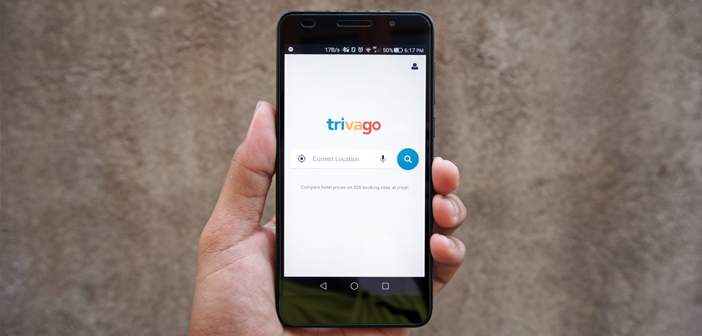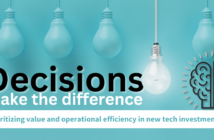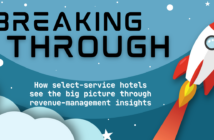A first look at Part 2 of Kalibri Labs’ special report.
Interview with Cindy Estis Green
To support the industry in addressing digital distribution evolution, Kalibri Labs has continued to track industry undercurrents to help reveal what hotel brands, owners and operators can do to embrace the changes and position their businesses for competitive success.
“Demystifying the Digital Marketplace,” a report that builds on the landmark 2012 study, is unprecedented in scope and scale. The rich insights and data provide a framework for understanding market realities as well as embracing opportunities to manage costs and optimize profit contribution.
Here we have an exclusive interview with Kalibri Labs CEO Cindy Estis Green on Part 2 of the industry report.
(Today’s Hotelier): Your study points out that the cost of hotel customer acquisition is on the rise and is now second only to labor costs. Why is that, and how did it get so high?
(Cindy Estis Green): Well, there are many costs associated with getting customers to book a hotel room. These include commissions, transaction fees, technical connectivity, loyalty and sales and marketing costs. For many years the cost of customer acquisition averaged out to 5 percent to 10 percent of a hotel’s revenue, but now that so many consumers have turned to online booking channels, these costs have risen to 15 percent to 25 percent of what the guest is paying.
There are many technology giants aggregating the demand for hotel rooms such as OTAs and metasearch players like Google, Trivago and Kayak. Because they have so many consumers passing through their portals, they can charge a higher price to hotels for bookings through these channels. These costs are rising fast. In fact, the growth rate of OTA commissions is now at three times the growth rate of guest-paid revenue. From a cost perspective, most hotels pay 7 percent to 15 percent for the direct costs associated with a booking, and then another 7 percent to 10 percent for sales and marketing spending, such as social media or sales team payroll costs. This adds up quickly, and the costs continue to rise as more business is aggregated through these large technology companies.
You noted the revenue from each booking that hotels get to keep has declined in the last two years. If not to the hotel, where is this revenue going?
A good way of thinking about this is in terms of “Revenue Capture.” It’s the percentage of revenue that a hotel can keep from the amount a guest is willing to pay. We calculate that by first taking the amount the guest pays, whether to the hotel directly or to an OTA or wholesaler, which we call guest-paid revenue. Then we take the amount of revenue that the hotel keeps after OTAs or wholesalers keep their agreed-upon portion, and after the hotel pays commissions, transaction fees, loyalty costs and other acquisition costs – this equals the hotel’s net revenue. We then divide the net revenue by the guest-paid revenue to get the revenue capture number.
What we see is that the biggest portion of customer acquisition costs, now at 15 percent to 25 percent, are retail and wholesale commissions. Then there are smaller amounts for technical and channel-related fees along with the brand loyalty fees.
How has customer booking behavior changed since your last study in 2012, and what changes do you see in the future?
As recently as five to 10 years ago, a large percentage of hotel bookings in the upper midscale, midscale and economy segments were done either by the guest calling directly or driving up while on the road. Consumers are increasingly booking online and on mobile devices, and this pattern will grow over the next five years as mobile applications get more convenient and provide more services to travelers. We also see that many consumers who previously used OTAs have moved on to the metasearch sites where they can often do more comparisons either on rates or hotel features.
Several brands have book-direct campaigns going on. Do you have any insights into whether these campaigns are making a difference?
Yes, the data from the current Demystifying the Digital Marketplace study indicates that an increasing number of consumers are choosing to book on Brand.com sites rather than third party sites for most chain scales. Although the OTA channels are still growing, Brand.com grew at a faster rate in the last six months of 2016 when these book-direct campaigns were in full swing. The business from those direct channels is more profitable to hotels than the business coming through third parties. However, there are differences both by hotel and hotel type and much of the benefit depends on how much of a discount is given for the booking. Many brands are adding other benefits that are not discount-related for those who book directly, such as mobile check-in and keyless entry, which are likely to be compelling to travelers and will not incur as much cost to the hotel.
There’s been a lot of talk in the past few years about loyalty programs and how crucial they are in customer booking behavior. Is that a story you see played out in the data?
Yes, loyalty programs have proven to be very effective for the larger brands. For midscale, upscale and upper upscale hotels, over 50 percent of transient guests are loyalty members as of June 2016. In the economy segment, the penetration of loyalty usage for this period is lower (15 percent) but growing quickly at 30-plus percent year-over-year. Hotel brand loyalty programs have also given business travelers and other frequent travelers much more of an affinity for booking through hotel brands’ direct channels.
The OTAs are trying to get traction with loyalty programs as well, but the hotel brands have an advantage in that they can deliver services to guests in the hotel more easily as part of the loyalty offering. It is not clear how the millennial generation will view loyalty programs, but the pattern seems to revolve around giving a differentiated hotel experience, one that is unique to the hotel and encourages the consumer to want to return to that hotel or that brand, which is a factor that is within the control of the hotel owner and operator to deliver.
Are there any insights that you can share on how the different segments are performing – lower, middle and upper tiers?
One of the major topics visible in the data is the decline in property direct bookings (such as walk-ins) and the shift of these travelers to the OTA channel. This shift has resulted in lower revenue capture numbers for upper midscale, midscale and economy hotels in particular. On a positive note, the highest rate of growth in guest-paid revenue was in these same hotel segments. We see that the growth in revenue is healthy, but the hotels have to develop techniques to capture more of that benefit. The upper tier, which includes the luxury, upper upscale and upscale chain scales, was able to improve revenue capture more over the last few years by reducing the low profit margin business through opaque OTA bookings and increasing the high profit margin Brand.com business.
What steps would you recommend to a hotel owner to better manage his/her cost of acquisition?
Here are a few thoughts:
- For those hotels seeing a shift in their business from property direct to the OTA channel, try to shift these guests to direct channels for subsequent stays. Give guests an incentive to book directly, and collect email addresses and/or sign them up for a loyalty program.
- Many hotel owners and operators think they cannot improve their net revenue because they don’t control the OTA commission rates, but the hotel can work on shifting to more profitable channels, as they don’t always negotiate the actual commission rate.
- Many hoteliers think that filling up at any rate is better than an empty room, but that is not always true. Shifting travelers from a higher cost OTA (like the opaque model) to a lower cost OTA (like Expedia/merchant model or Booking.com/retail model) can make a big difference to a hotel’s net revenue capture.
- Consider that taking more business through a metasearch site like TripAdvisor or Kayak may prove more profitable than getting it through OTA channels with higher commission rates.
Most hotels would like to generate all their business through direct channels, but that is not possible in most markets. Therefore, the best path is to find an optimal channel mix for your hotel that gives you the highest net revenue but is a healthy mix of different sources of business. ■
“Demystifying the Digital Marketplace: Spotlight on the Hospitality Industry,” a three-part series, provide by Kalibri Labs through the AH&LA Consumer Innovation Forum, along with many industry sponsors (including AAHOA), is a full breakdown of data, as well as a systematic analysis on digital and distribution issues and how they’ll impact consumers and affect the hotel industry. To learn more or gain access to this insightful data, email [email protected].
Learn more in San Antonio!
At AAHOACON17, join us Wednesday, April 12, for “Make Brand.com & OTAs a Profitable Combination,” a session presented by Cindy Estis Green, CEO, Kalibri Labs, where she’ll discuss research, revealing what you can do to drive revenue through the right combination of Brand.com and OTAs.




